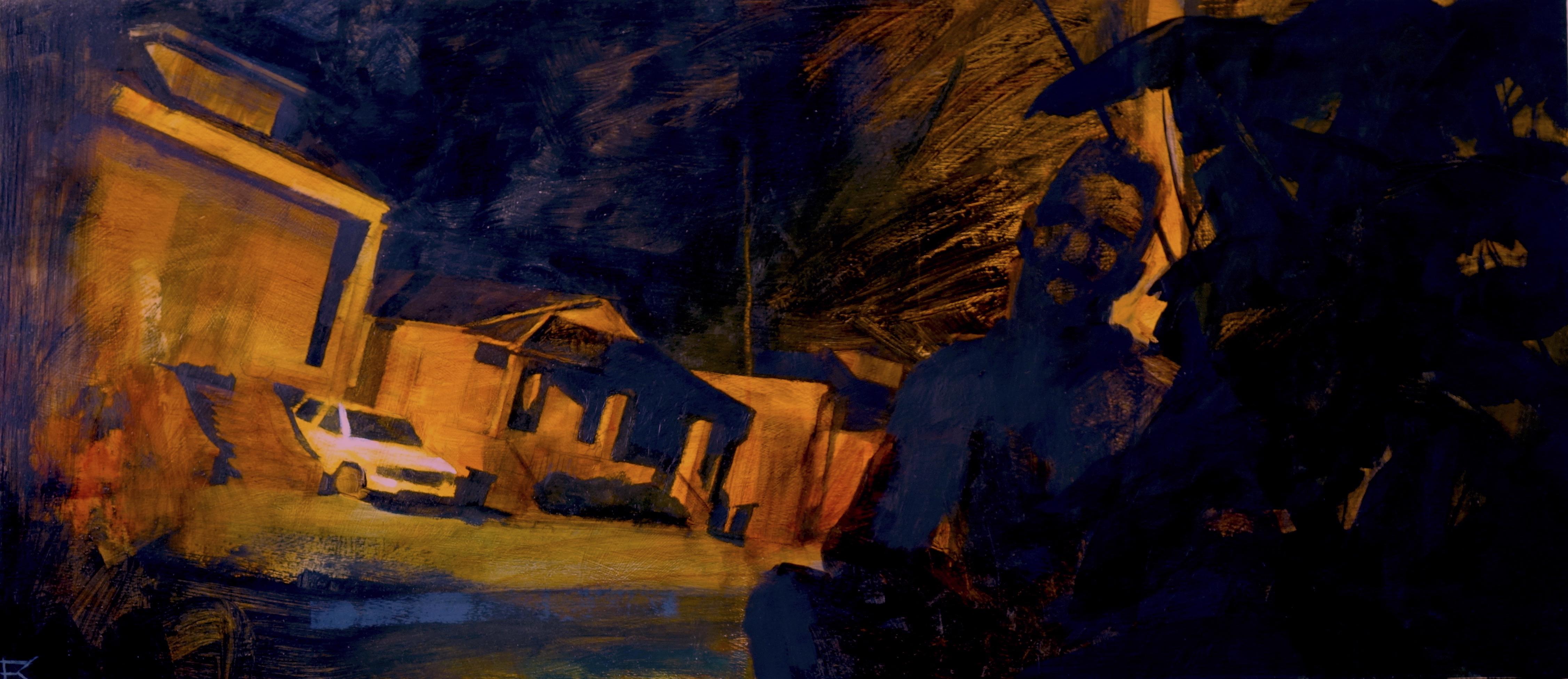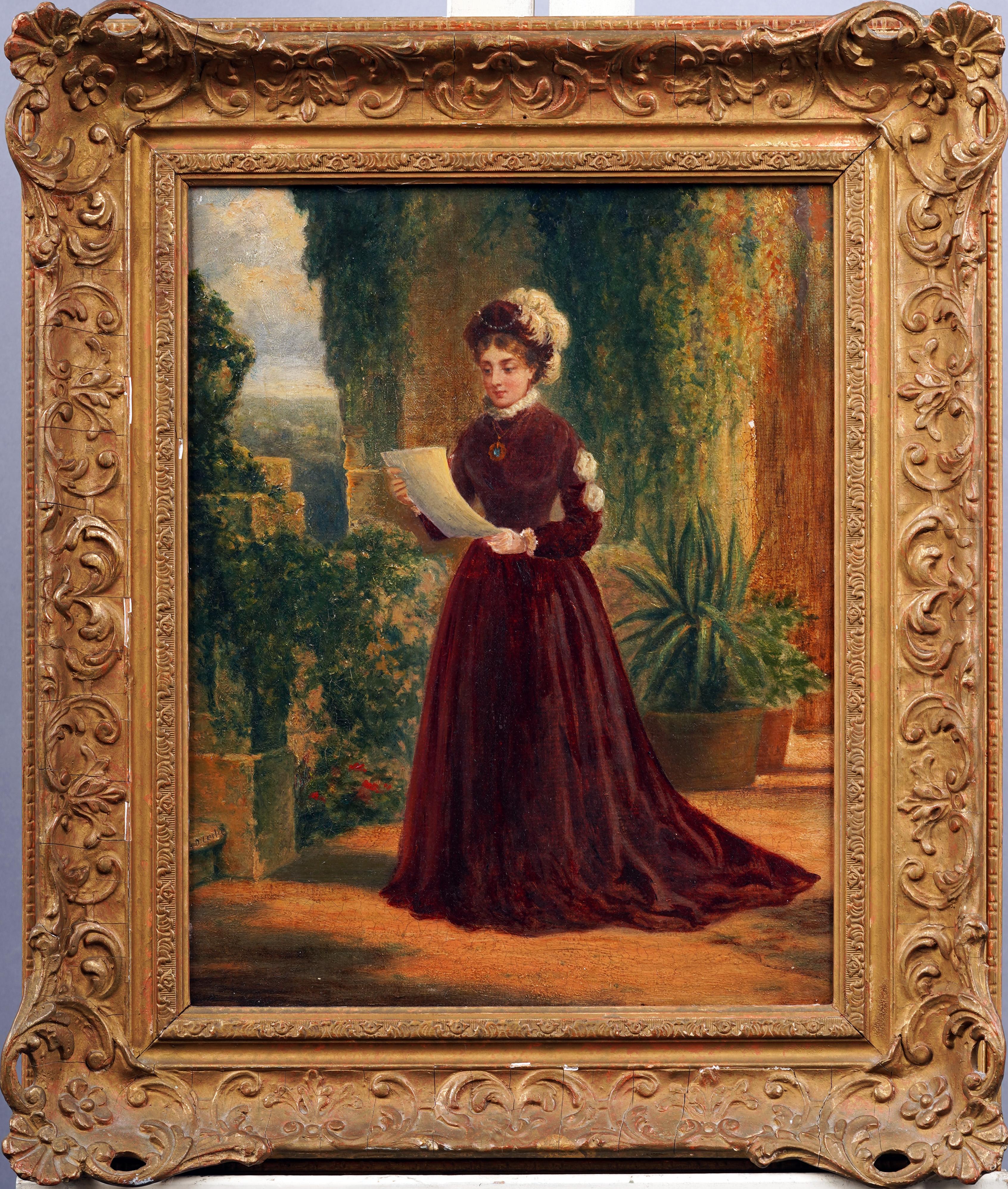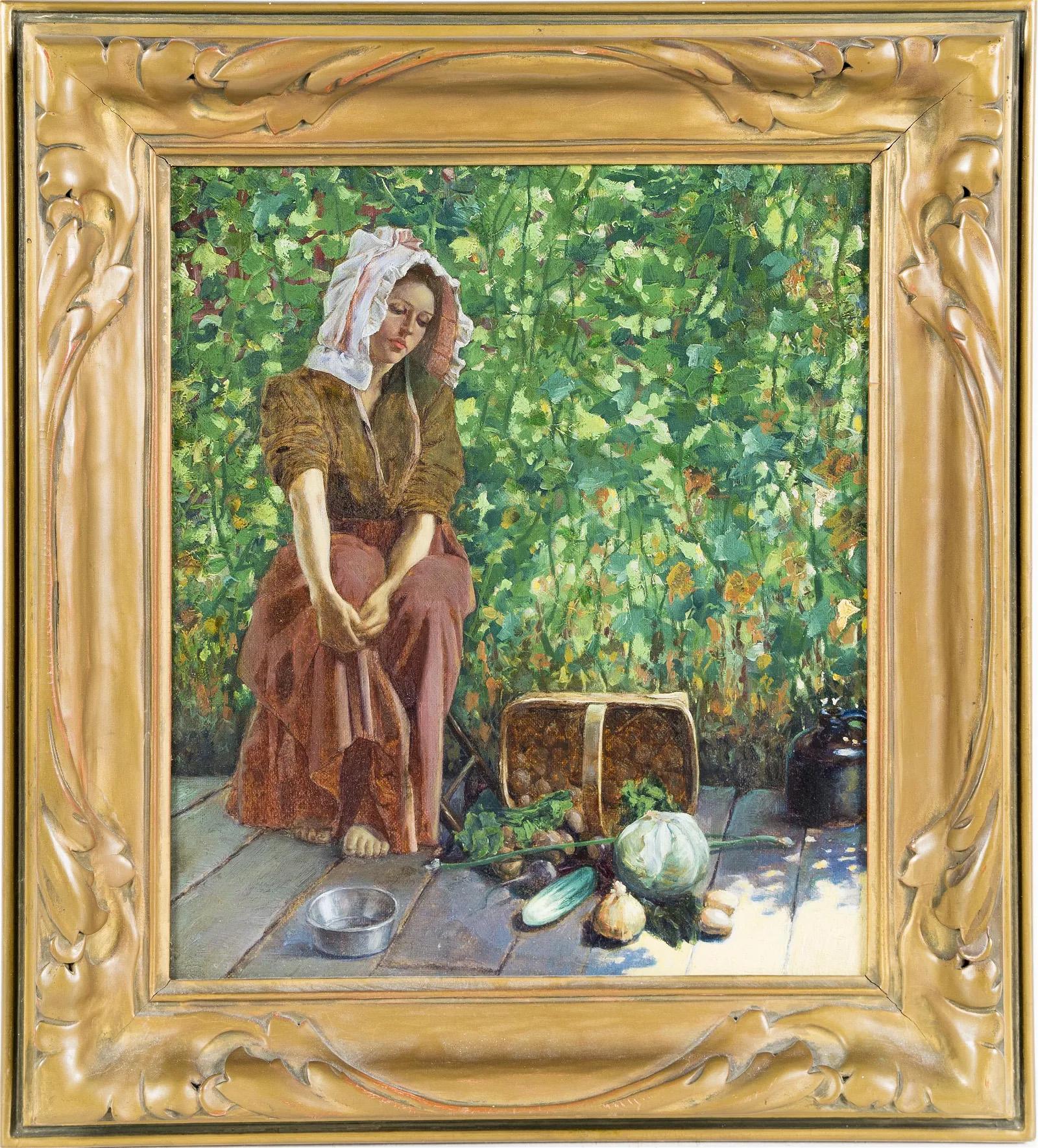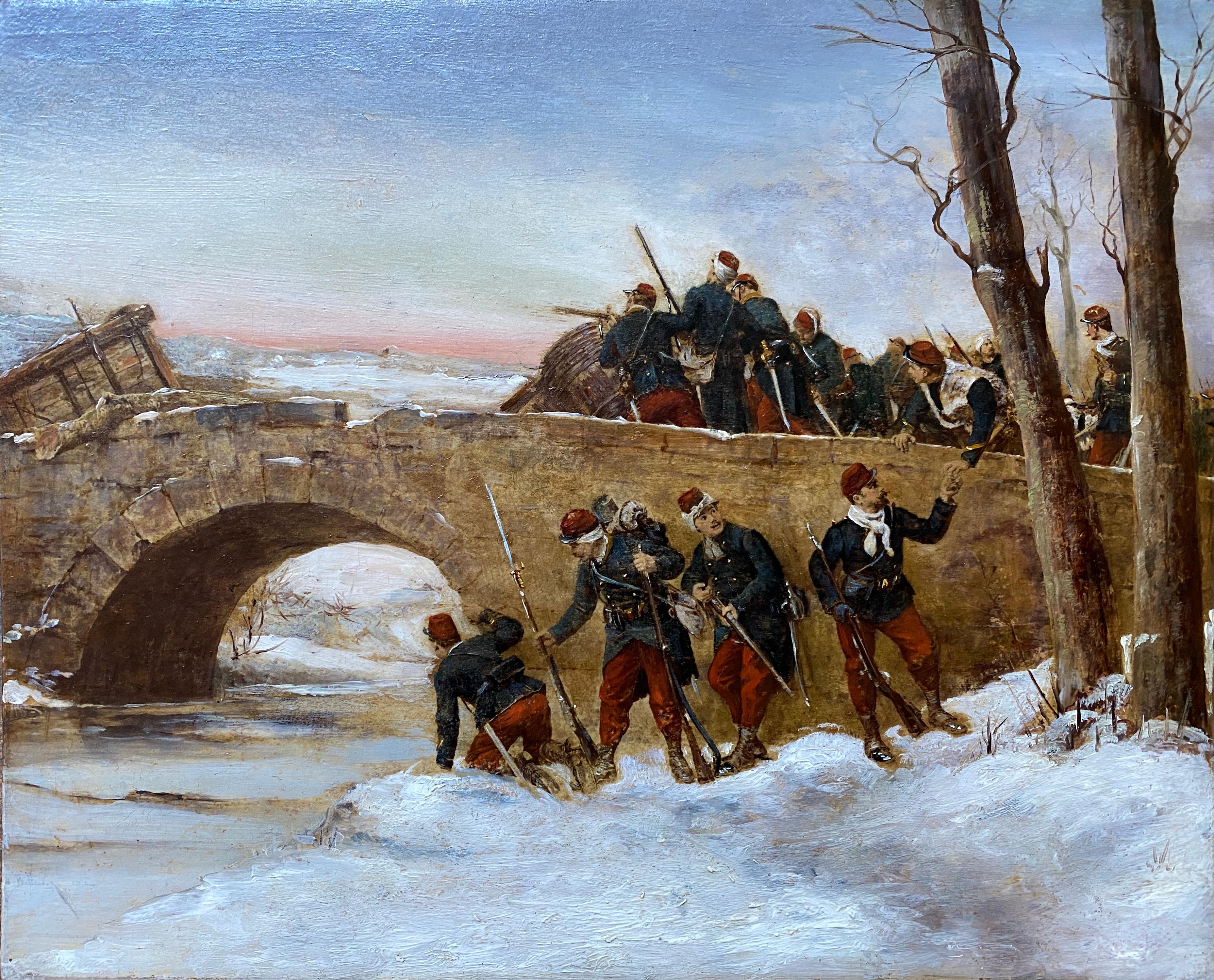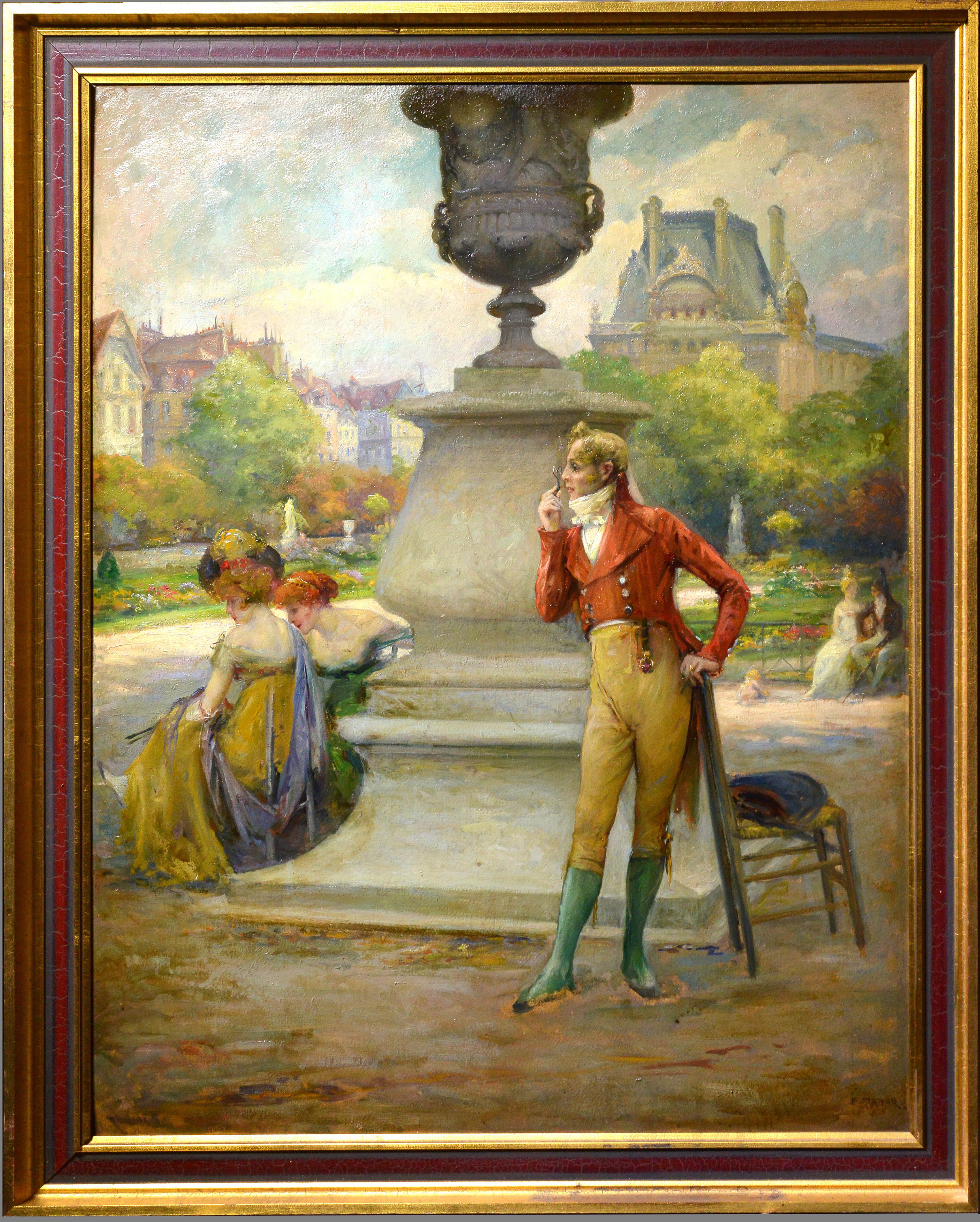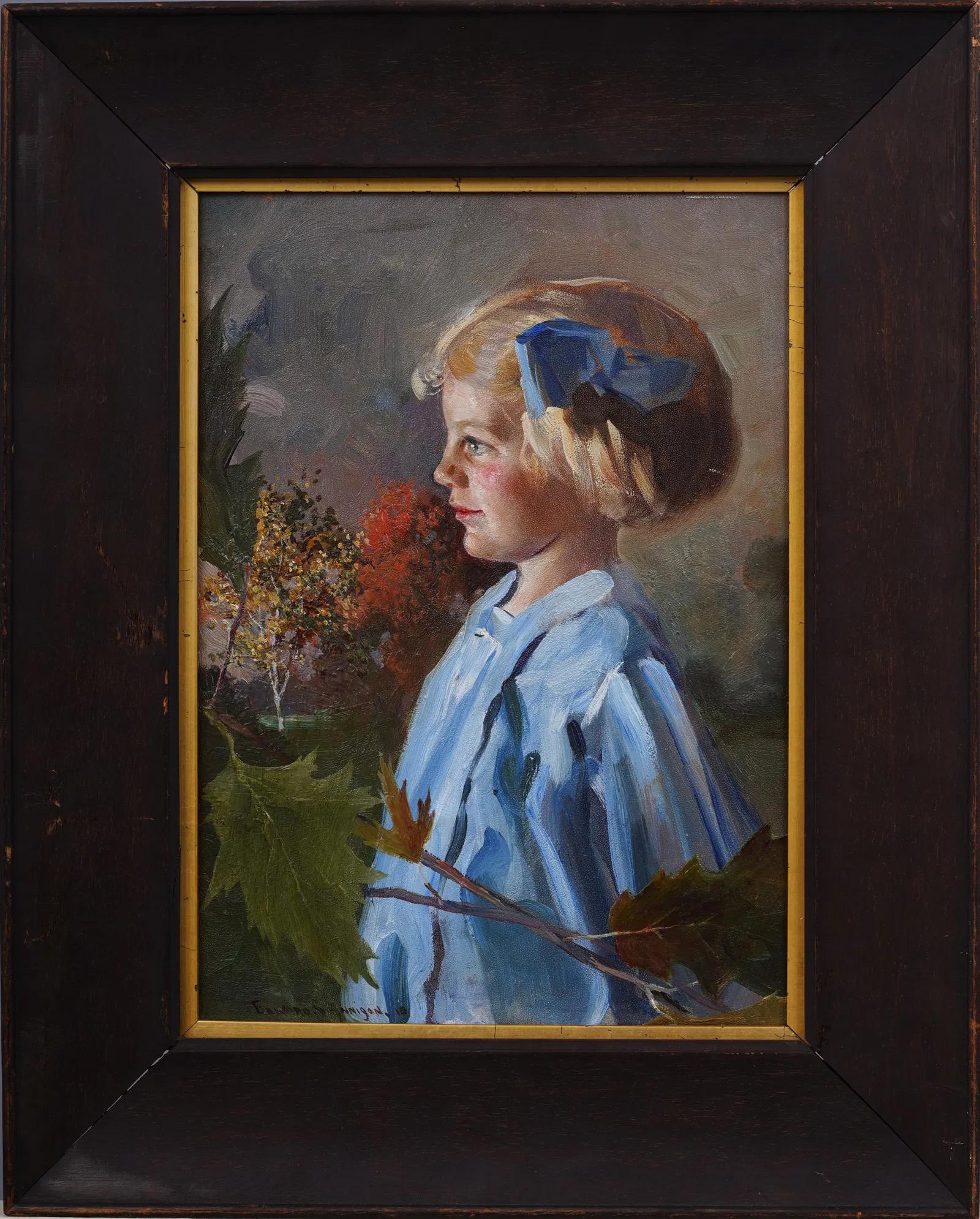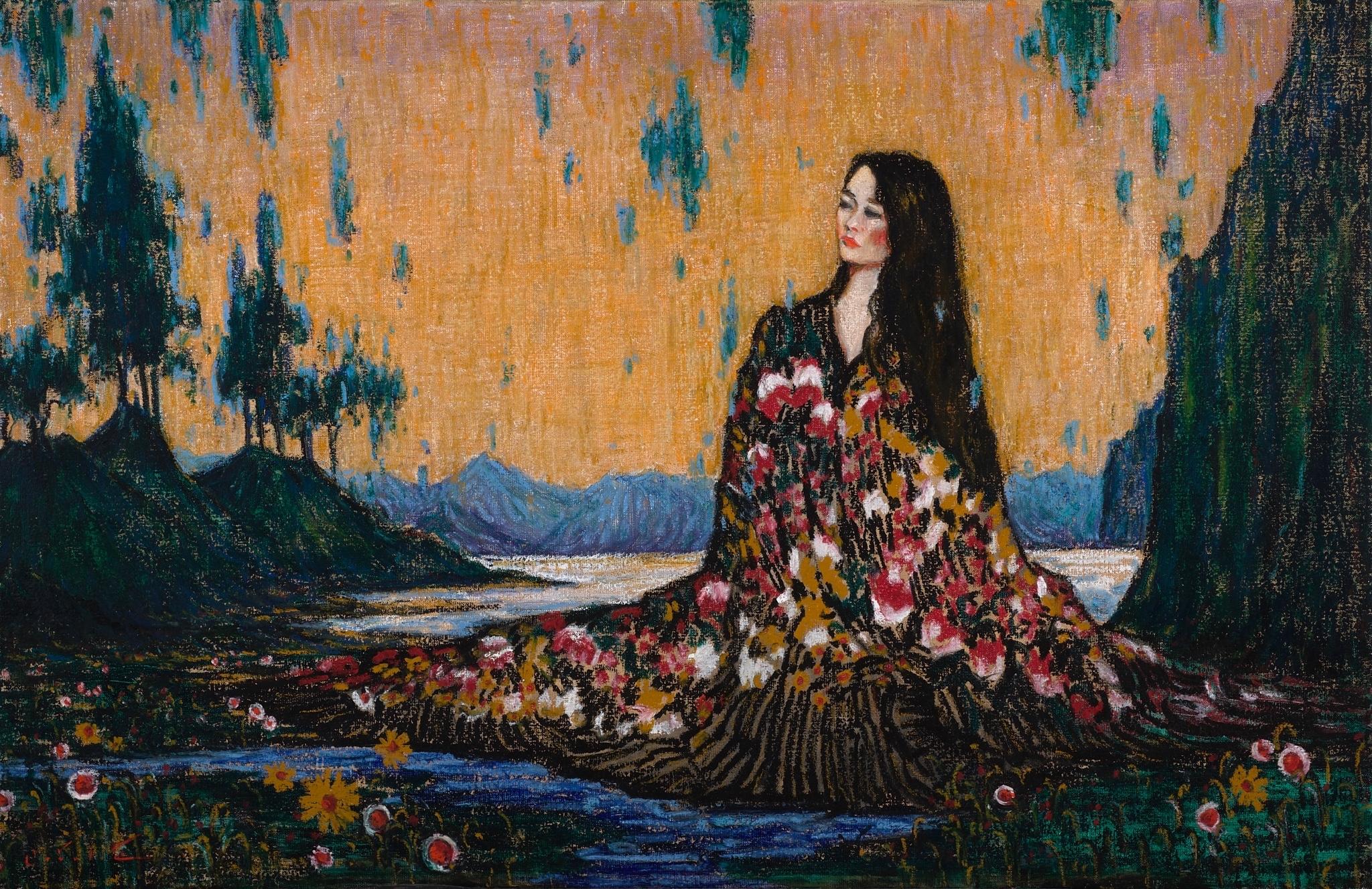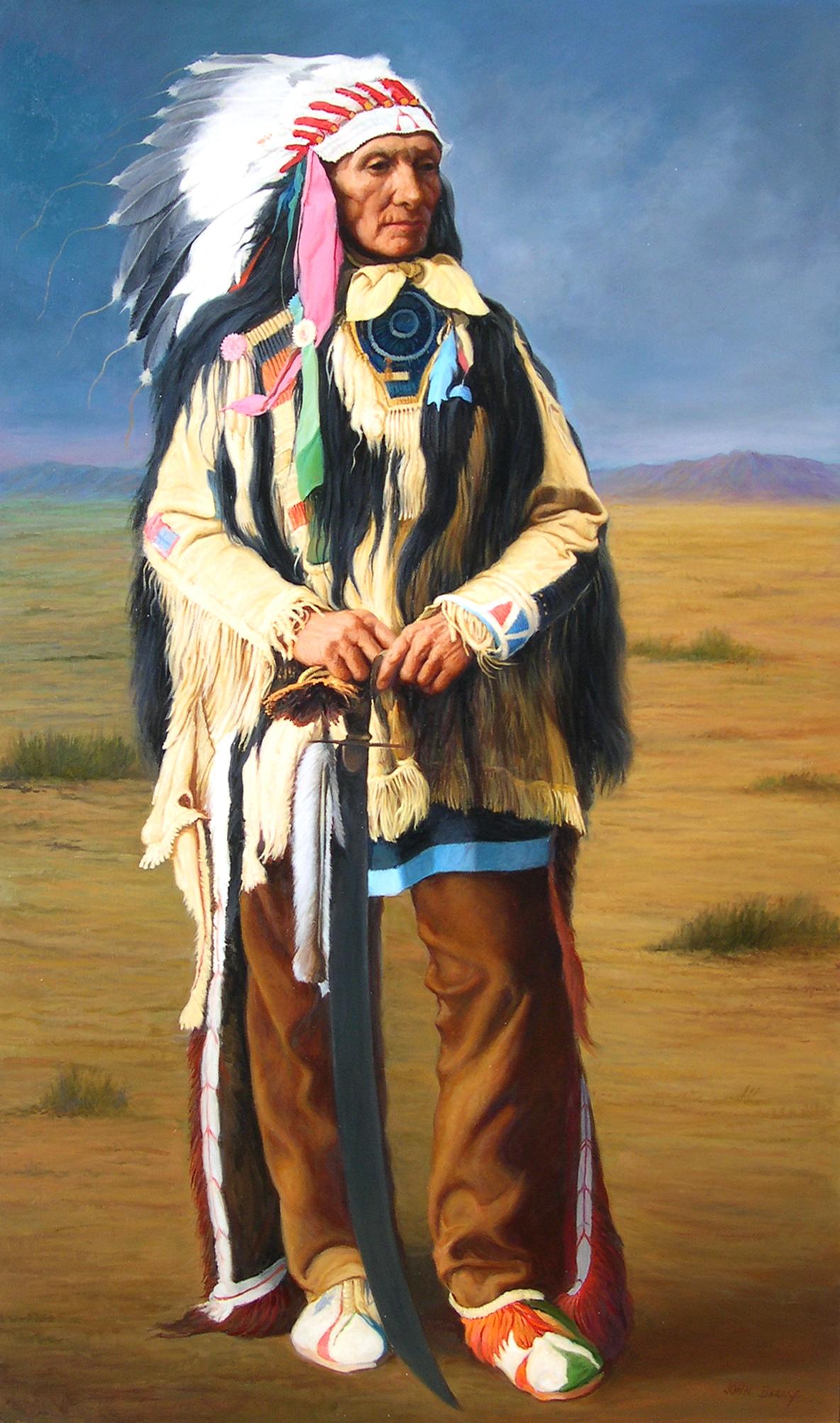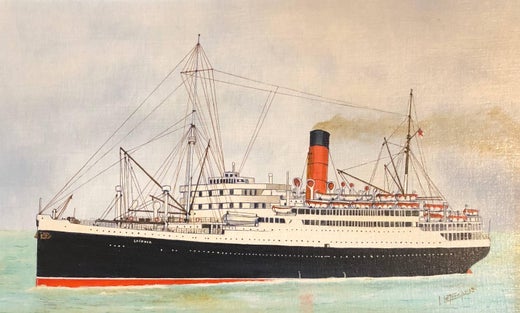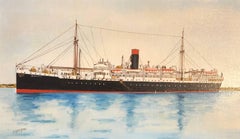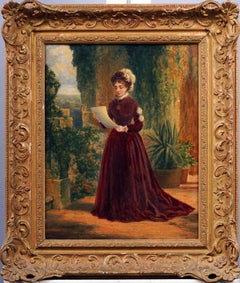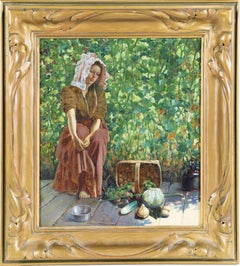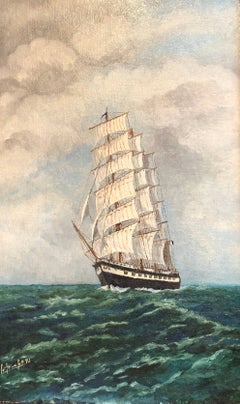
French Orient Ship, signed oil painting
Want more images or videos?
Request additional images or videos from the seller
1 of 9
Louis LetoucheFrench Orient Ship, signed oil paintingC. 1996
C. 1996
About the Item
- Creator:Louis Letouche (1924 - 2015, French)
- Creation Year:C. 1996
- Dimensions:Height: 22.75 in (57.79 cm)Width: 14 in (35.56 cm)Depth: 1 in (2.54 cm)
- Medium:
- Movement & Style:
- Period:
- Condition:
- Gallery Location:Cirencester, GB
- Reference Number:1stDibs: LU50932971611
Louis Letouche
Louis Letouche was passionate about painting. He began to paint in 1958. Self-taught he turned to figurative painting privileging the landscapes and portraits of marine.
Several exhibitions have been devoted to this painter around Paris Galleries.
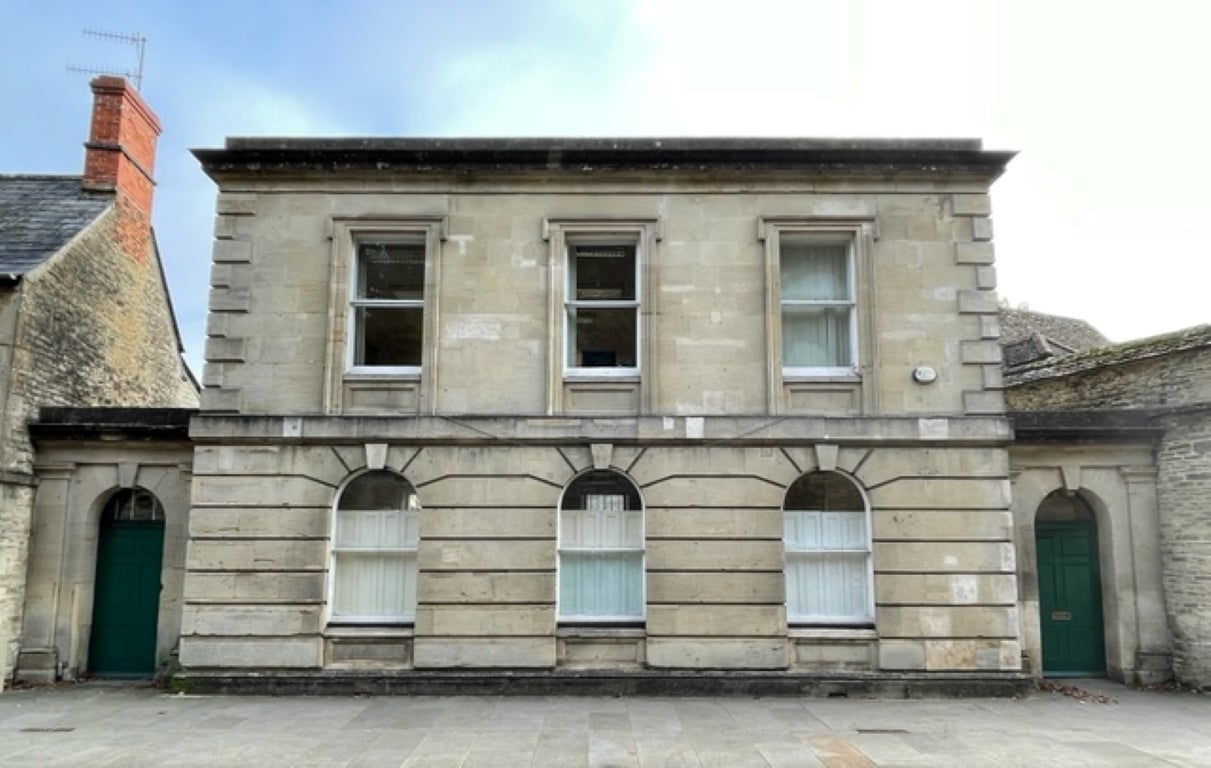
About the Seller
5.0
Platinum Seller
Premium sellers with a 4.7+ rating and 24-hour response times
Established in 1989
1stDibs seller since 2016
4,487 sales on 1stDibs
Typical response time: 1 hour
Authenticity Guarantee
In the unlikely event there’s an issue with an item’s authenticity, contact us within 1 year for a full refund. DetailsMoney-Back Guarantee
If your item is not as described, is damaged in transit, or does not arrive, contact us within 7 days for a full refund. Details24-Hour Cancellation
You have a 24-hour grace period in which to reconsider your purchase, with no questions asked.Vetted Professional Sellers
Our world-class sellers must adhere to strict standards for service and quality, maintaining the integrity of our listings.Price-Match Guarantee
If you find that a seller listed the same item for a lower price elsewhere, we’ll match it.Trusted Global Delivery
Our best-in-class carrier network provides specialized shipping options worldwide, including custom delivery.More From This Seller
View AllCuauhtémoc, signed oil painting
By Louis Letouche
Located in Cirencester, Gloucestershire
Cuauhtémoc, 1982
by Louis Letouche (French 1924-2015)
oil painting on linen canvas, stretched over board
framed
Framed size: 15 x 21.75 inches
Superb oil painting by the well listed French marine artist Louis Letouche (1924-2015). The painting portrays the 20th Century ship titled: Cuauhtemoc, 1982.
ARM Cuauhtémoc is a sail training vessel of the Mexican Navy, named for the last Mexica Hueyi Tlatoani Cuauhtémoc who was captured and executed in 1525.
She is the last of four sister...
Category
1990s Realist Portrait Paintings
Materials
Oil
$768 Sale Price
20% Off
Herzogin Cecilie, signed oil painting
By Louis Letouche
Located in Cirencester, Gloucestershire
Herzogin Cecilie, 1902
by Louis Letouche (French 1924-2015)
oil painting on linen canvas, stretched over board
framed
Framed size: 15 x 21.75 inches
Superb oil painting by the well listed French marine artist Louis Letouche (1924-2015). The painting portrays the early 20th Century ship titled: Herzogin Cecilie, 1902.
Herzogin Cecilie was built in 1902 by Rickmers Schiffbau AG in Bremerhaven. She was yard number 122 and was launched on 22 April 1902. Completion was on 7 June that year. She was 334 feet 8 inches (102.01 m) long, with a breadth of 46 feet 3 inches (14.10 m) and a draught of 24 feet 2 inches (7.37 m). Herzogin Cecilie was built for Norddeutscher Lloyd Bremen. Unlike other contemporary German merchant sailing ships, the black Flying-P-Liners or the green ships of Rickmers, she was painted in white. She was one of the fastest windjammers ever built: she logged 21 knots at Skagen.
The tall ships of the time remained competitive against the steamers only on the longer trade routes: the Chilean nitrate trade, carrying salpeter from Chile to Europe, and the Australian wheat trade, carrying grain from Australia to Europe. Both routes required rounding Cape Horn routinely, and were not well suited for steamers, as coal was in short supply there.
Herzogin Cecilie was one of the fastest merchant sailing ships of her time, on a par with the Flying-P-Liners. The trip around Cape Horn from Portland (Oregon) to The Lizard (England) was done in 1903 in only 106 days.
At the outbreak of World War I, she was interned by Chile, returning to Germany in 1920, only to be given to France as reparation, and subsequently sold to Gustaf Erikson (24 October 1872 – 15 August 1947) of Finland for £4250. She was homeported at Mariehamn.[2]
As the freight rates for salpeter had dropped after the war, Gustaf Erikson sent her to bring grain from Australia. In so-called grain races, several tall ships tried to arrive first in Europe, to sell their cargo for a higher price, as told, for example, in The Great Tea Race of 1866 or The Last Grain Race. Typically, ships were loaded in the Spencer Gulf area, Port Victoria, South Australia or Wallaroo, South Australia, and travelled to Europe, with ports on the British Isles like Queenstown, Ireland or Falmouth, Cornwall being considered as the finish.
After "winning" four times prior to 1921, she again won the grain race four times in eleven trips from 1926 to 1936.
In 1927, when Herzogin Cecilie covered Port Lincoln (South Australia) –Falmouth, London and won a race against the Swedish ship Beatrice. Alan Villiers was on board, which would result in his book Falmouth for Orders, and later a trip aboard the barque Parma.
Wreck of the Herzogin Cecilie in south Devon.
With Sven Erikson as her Captain and Elis Karlsson her First Mate, the ship left Port Lincoln in South Australia on 21 January 1935, with a cargo of wheat, and after taking a more southerly route than usual, reached Falmouth for Orders on 18 May making her passage of 86 days the second fastest ever. Herzogin Cecilie was making for Ipswich in dense fog, when, on 25 April 1936, she grounded on Ham Stone Rock and drifted onto the cliffs of Bolt Head on the south Devon coast. After parts of the cargo were unloaded, she was floating again, only to be towed in June 1936 to Starhole (Starehole) Bay at the mouth of the nearby Kingsbridge Estuary near Salcombe, and beached there.On 18 January 1939, the ship capsized and sank. The remains of the ship sit at a depth of 7 metres at 50°12.82′N 3°47.02′W.
The timber and brass portholes from the chart room...
Category
1990s Realist Portrait Paintings
Materials
Oil
$766 Sale Price
20% Off
Gota Lejon, signed oil painting
By Louis Letouche
Located in Cirencester, Gloucestershire
Göta Lejon, 1746.
by Louis Letouche (French 1924-2015)
oil painting on linen canvas, stretched over board
framed
Framed size: 15 x 21.75 inches
Superb oil painting by the well lis...
Category
1990s Realist Portrait Paintings
Materials
Oil
$768 Sale Price
20% Off
Imerethie II, signed oil painting
By Louis Letouche
Located in Cirencester, Gloucestershire
Imerethie II, 1924
by Louis Letouche (French 1924-2015)
oil painting on linen canvas, stretched over board
framed
Framed size: 13.5 x 22.5 inches
Superb oil painting by the well l...
Category
1990s Realist Portrait Paintings
Materials
Oil
$768 Sale Price
20% Off
Sagres Ship Portrait signed oil painting
By Louis Letouche
Located in Cirencester, Gloucestershire
Sagres, 1937
by Louis Letouche (French 1924-2015)
oil painting on linen canvas, stretched over board
framed
Framed size: 16 x 19 inches
Superb oil painting by the well listed French marine artist Louis Letouche (1924-2015). The painting portrays the early 20th Century ship titled: Sagres, 1937.
The three-masted ship was launched under the name Albert Leo Schlageter on 30 October 1937 at Blohm & Voss in Hamburg for Nazi Germany's Kriegsmarine. The ship was named after Albert Leo Schlageter, who was executed in 1923 by French forces occupying the Ruhr area. Her first commander was Bernhard Rogge. Sagres is a sister ship of the Gorch Fock, the Horst Wessel, and the Romanian training vessel Mircea. Another sister, Herbert Norkus, was not completed, while Gorch Fock II was built in 1958 by the Germans to replace the ships lost after the war.
Following a number of international training voyages, the ship was used as a stationary office ship after the outbreak of World War II and was only put into ocean-going service again in 1944 in the Baltic Sea. On 14 November 1944 she hit a Soviet mine off Sassnitz and had to be towed to port in Swinemünde. Eventually transferred to Flensburg, she was taken over there by the Allies when the war ended and finally confiscated by the United States.
In 1948, the U.S. sold her to Brazil for a symbolic price of $5,000 USD. She was towed to Rio de Janeiro where she sailed as a school ship for the Brazilian Navy under the name Guanabara. In 1961, Ambassador Teotónio Pereira of Portugal, who was also a man of the sea...
Category
1990s Realist Portrait Paintings
Materials
Oil
$768 Sale Price
20% Off
Danube, signed oil painting
By Louis Letouche
Located in Cirencester, Gloucestershire
Danube, 1855-1878
by Louis Letouche (French 1924-2015)
oil painting on linen canvas, stretched over board
framed
Framed size: 14 x 19 inches
Superb oil painting by the well listed...
Category
1990s Realist Portrait Paintings
Materials
Oil
$768 Sale Price
20% Off
You May Also Like
Portrait of a Young Boy in Garden - British Edwardian Slade School oil painting
Located in London, GB
This very interesting British Edwardian portrait oil painting is by noted Slade School artist Algernon Cecil Newton. Newton became primarily a landscape artist and exhibited numerous...
Category
Early 1900s Realist Portrait Paintings
Materials
Oil
"Champagne" (2022) by Emma Kalff, Original Oil Painting of Cityscape
Located in Denver, CO
"Champagne" by Emma Kalff (United States) is a handmade landscape oil painting depicting a night time city scene with a blurry figure on the right side.
Emma Kalff is a Dutch-born p...
Category
21st Century and Contemporary Realist Portrait Paintings
Materials
Oil, Panel
Antique English Realist Genre Scene Framed High Society Portrait Oil Painting
Located in Buffalo, NY
George Dunlop Leslie (1835 - 1921) Antique English realist oil painting. Oil on canvas. Signed. Framed. Measuring 17 by 20 overall and 12 by 15 paining alone.
Artist Bio:
George Dunlop Leslie RA (London 2 July 1835 – 21 February 1921 Lindfield, Sussex) was a British genre painter, author and illustrator. He was born into an artistic family; his father was the notable genre painter Charles Robert Leslie RA, and his uncle Robert Leslie was a marine artist. He studied art first at Cary's Art Academy, then from 1854 at the Royal Academy. His first exhibition at the Academy was in 1859, and he showed his work every year thereafter. He became an Associate (ARA) in 1868 and a full Royal Academician (RA) in 1876.George Dunlop Leslie lived early on in St John's Wood (London), and was part of the St John's Wood Clique, a group of artists who favoured light-hearted genre subjects. From 1884–1901 he was resident at "Riverside", St. Leonard's Lane, Wallingford, Oxfordshire. His sister Mary Leslie (1833–1907), also an artist, lived at "Cromwell Lodge" next door. Fellow artist, James Hayllar, was also a resident of the village and they painted a portrait of Queen Victoria together for her Golden Jubilee in 1887. From 1906 he lived at "Compton House" in Lindfield, SussexHis early works, such as Matilda (1860) showed the strong influence of the Pre-Raphaelites, but he settled into a more academic, aesthetic, style of painting with the aim of showing "pictures from the sunny side of English domestic life". He often used children as subjects and his work was praised by John Ruskin for its portrayal of the "sweet quality of English girlhood". One of his pictures, This is the Way we Wash our Clothes, was used as a poster in an advertising campaign for soap. Despite its apparently trivial subject matter, however, Leslie's work was highly regarded by critics of the time.In 1889 during his time at Riverside house in Wallingford Leslie is credited with painting four angel murals in St Leonards Church.Leslie was also an author and had several books published. Our river (1888), Letters to Marco (1893) and Riverside letters (1896) were all illustrated by him in black and white, and based on personal observations of life and nature in his local area. He also wrote a history of the early years of the Royal Academy - The inner life of the Royal Academy.Leslie was married to Lydia. They had a daughter Alice (depicted in his painting Alice in Wonderland) and a son Peter Leslie...
Category
1880s Realist Portrait Paintings
Materials
Canvas, Oil
Museum Quality American School School Young Woman Portrait Framed Oil Painting
Located in Buffalo, NY
Incredible quality American school portrait painting. Oil on canvas. Framed. No signature found.
Category
1880s Realist Portrait Paintings
Materials
Canvas, Oil
$3,600 Sale Price
20% Off
Portrait of a Young Woman at the Seashore - British Victorian art oil painting
By William Edward Frost
Located in London, GB
This beautiful oil painting on canvas dates to circa 1840 and is by British Victorian artist William Edward Frost who was noted for his depiction of nudes and feminine beauty. The ov...
Category
19th Century Realist Portrait Paintings
Materials
Oil
Harvesting Plums - Scottish 1930's Glasgow School art portrait oil painting
Located in London, GB
This superb Scottish Glasgow Girl 1930's portrait oil painting is by noted female artist Jessie M. McGeehan. McGeehan studied at the Glasgow School of art, enrolling at the age of 15 in 1888 and her last recorded attendance was in 1895. While at Glasgow School of Art, Jessie associated with prominent Scottish artists including Margaret Macdonald and Frances MacDonald of the Glasgow Four. She also later studied in Paris. This gorgeous vibrant Scottish School style portrait is just superb. The composition is of a young girl in a blue dress, her sleeves rolled up to her elbows. She has little gold hoops in each ear and a bow in her dark hair. She is gazing at the artist/viewer with dark eyes. She is sat in the foreground with a large wicker basket of purple plums and a couple of heads of garlic clasped on her lap. Above her are branches of a tree, laden with fruit. A line of slender silver tree trunks lead past a bed of orange pumpkins to a whitewashed cottage with a woman standing in the doorway. The sunshine is illuminating the scene and casting strong shadows. The brushwork is bold, the colours vibrant and the dark outlines typical of the Scottish School artists. This is a really charming oil painting by a noted female Scottish artist and one of the best examples of her work.
Signed and dated (19)32 upper right.
Provenance. Yorkshire estate.
Condition. Oil on canvas, 21 inches by 18 inches and in good condition.
Frame. Housed in a light ornate frame, 28 inches by 25 inches, in good condition.
Jessie Mary McGeehan (1872–1950) was a Scottish artist renowned for her painting and mosaic work, often depicting genre scenes, landscapes and figures. McGeehan was born in Airdrie and her father Patrick was a carriage hirer. An artistic family, Patrick exhibited a painting Royal Scottish Academy in 1879 and the artist Aniza McGeehan (1874–1962) was Jessie's younger sister. Both sisters studied at the Glasgow School of Art, Jessie being enrolled at the age of 15 in 1888 and last recorded as attending in 1895. Their younger sister Mary Catherine (1877–1960), later known as Sister Callista, also attended Glasgow School of Art from the age of nine. Jessie McGeehan also studied in Paris after leaving Glasgow School of Art. McGeehan's work included paintings, pastels, stained glass, mosaics and tapestry designs. She was active from 1892 and exhibited at the Royal Scottish Academy from 1895 with the work Sweet Idleness until 1916. From 1897 McGeehan lived and had a studio at 134 Bath Street, Glasgow, which was shared with Aniza until 1899. By 1936 she had moved to 152A Renfrew Street as advertised in the 'Glasgow Observer'. In 1901 McGeehan exhibited the work The Victorian Era at the Royal Academy in London. McGeehan's 1929 oil portrait of her sister Aniza is in the North Lanarkshire Museums collections. This was one of two oil paintings exhibited in the 1929 Walker Art Gallery Autumn Exhibition. Jessie McGeehan created a glass mosaic panel for St Augustine’s Church in Langloan, Coatbridge. She also created a glass mosaic in fourteen panels depicting the Stations of the Cross for St Aloysius...
Category
1930s Realist Portrait Paintings
Materials
Oil
$10,973 Sale Price
20% Off

